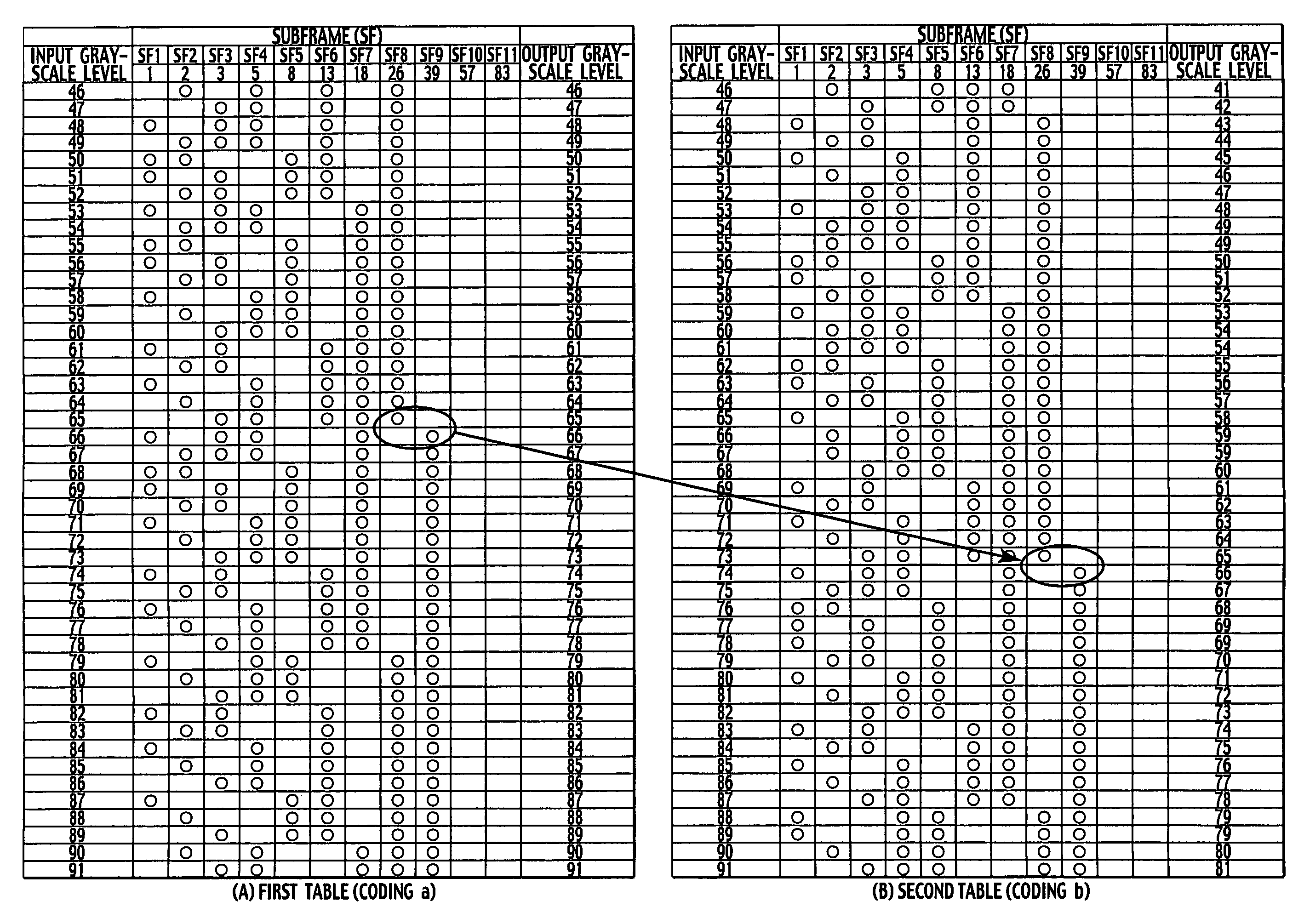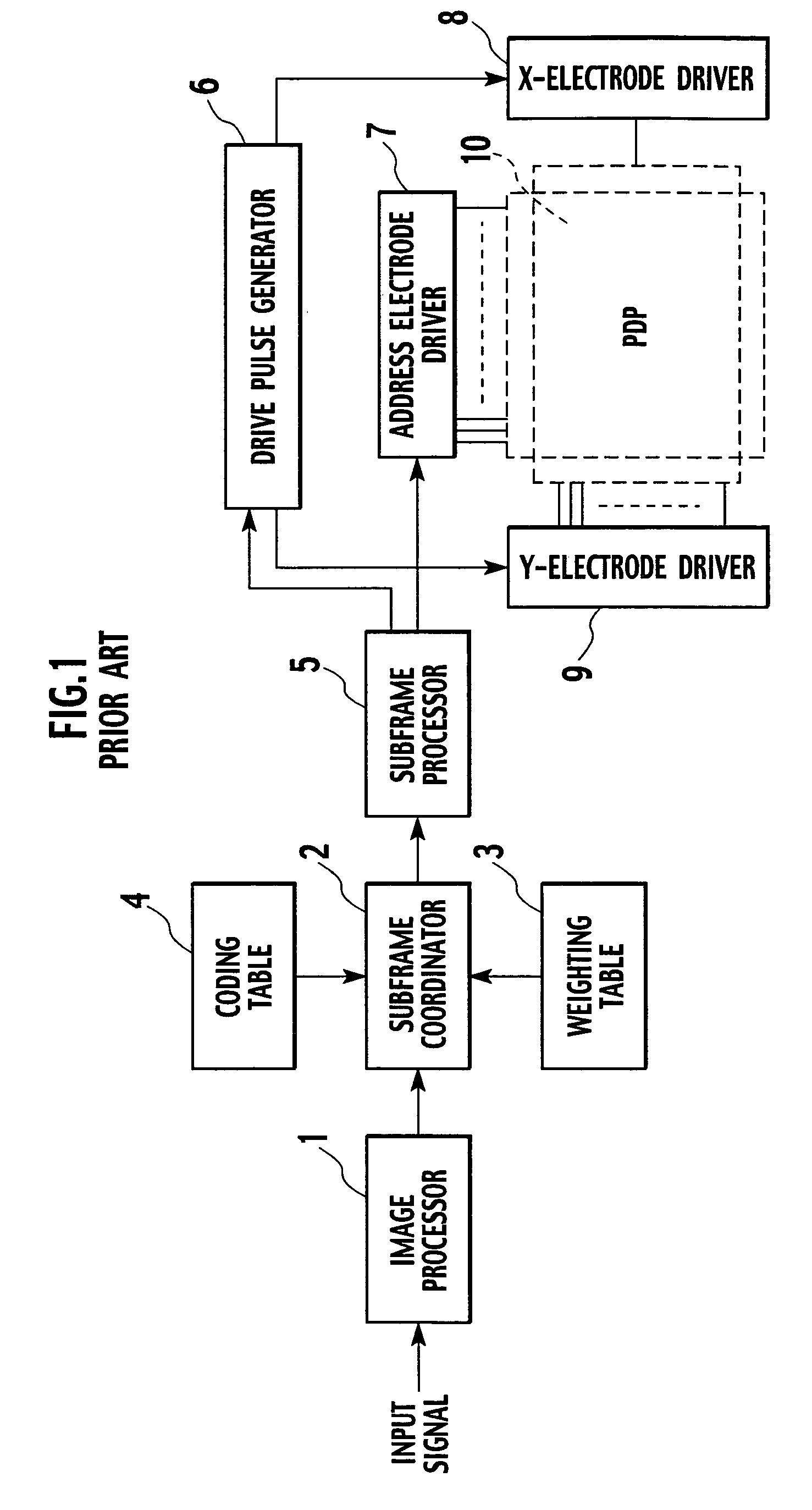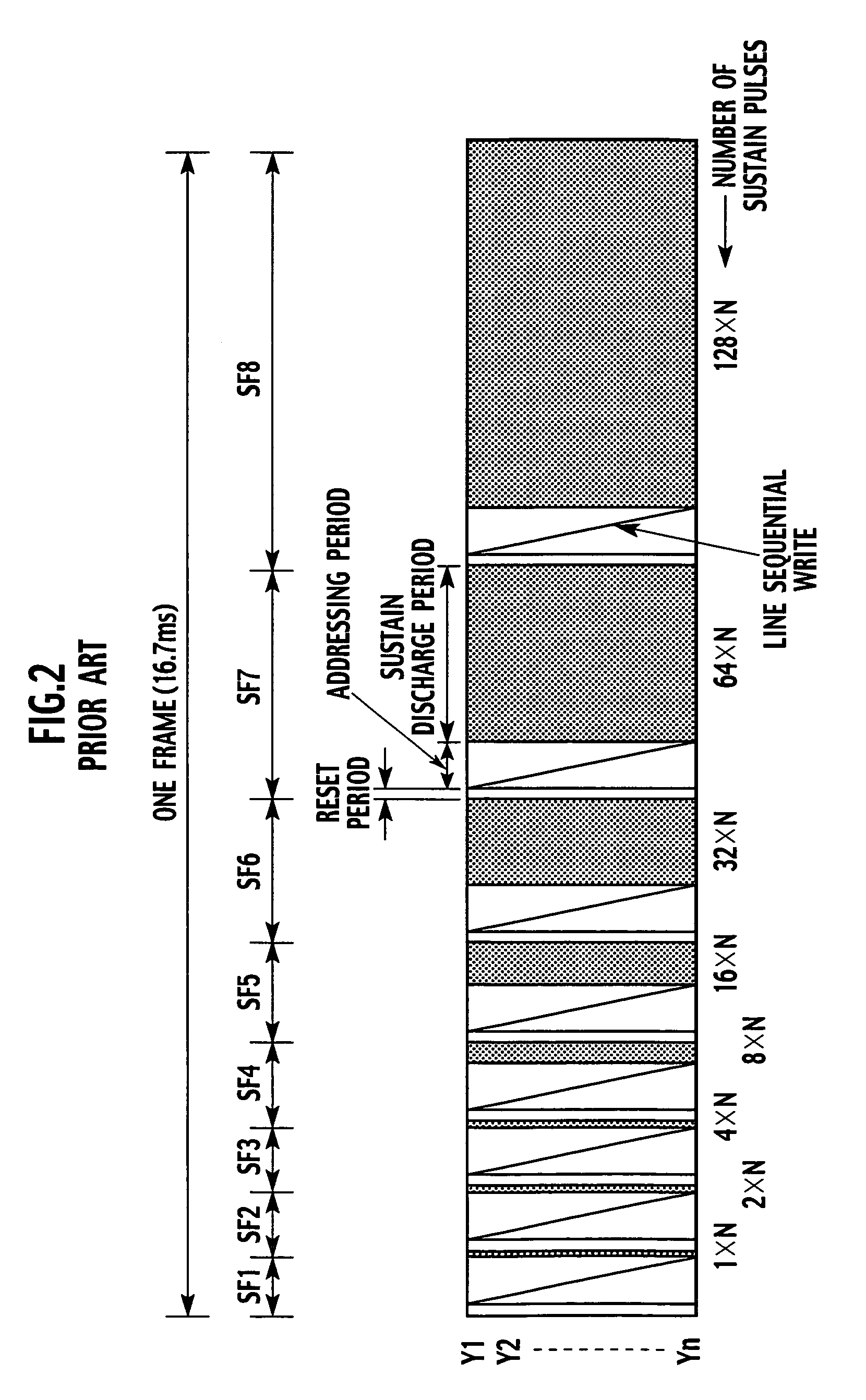Display apparatus
a technology of display apparatus and display screen, which is applied in the direction of identification means, instruments, computing, etc., can solve the problems of false contours and image quality degradation
- Summary
- Abstract
- Description
- Claims
- Application Information
AI Technical Summary
Benefits of technology
Problems solved by technology
Method used
Image
Examples
first embodiment
[0057]To solve the problem of false contours, the first embodiment of the present invention alternates the number of gray-scale levels from frame to frame. FIG. 5 shows a subframe structure according to the first embodiment. In FIG. 5, the first embodiment employs eleven subframes SF1 to SF11 each including a reset period, an addressing period, and a sustain discharge period. The sustain discharge periods are depicted with patterns. The reset periods of the subframes SF1 to SF11 are equal to one another, and the addressing periods thereof are also equal to one another. The sustain discharge periods of the subframes SF1 to SF11 differ from one to another.
[0058]The brightness of an image to be displayed is determined by the number of sustain pulses generated during a sustain discharge period, i.e., the weights of the subframes. In FIG. 5, the subframes SF1 to SF11 are allocated with weights 1, 2, 3, 5, 8, 13, 18, 26, 39, 57, and 83, respectively. The subframes SF1 to SF6 are weighted ...
second embodiment
[0081]The second embodiment of the present invention will be explained with reference to the accompanying drawings. FIG. 15 shows pixel arrangements on a display panel that change from one to another at intervals of one frame according to the second embodiment. In FIG. 15, pixels are divided into groups A and B, and the group-A pixels and group-B pixels are arranged in a hound's-tooth check. Namely, a group-A pixel is surrounded by group-B pixels, and a group-B pixel is surrounded by group-A pixels.
[0082]Any pixel that is in the group A in a first frame is changed to the group B in a second frame, and any pixel that is in the group B in the first frame is changed to the group A in the second frame. In this way, the pixel arrangements are alternated frame by frame. FIG. 16 shows temporal changes of the pixel arrangements. The pixels in the group A alternate the coding a of 256 gray-scale levels and the coding b of 230 gray-scale levels frame by frame, and at the same time, the pixels...
third embodiment
[0100]FIG. 19 is a graph showing an example of a technique of changing the gray-scale level of an input signal according to the third and fourth embodiments of the present invention. In FIG. 19, an abscissa represents the gray-scale level of an input signal, and an ordinate represents the gray-scale level of an output signal. When an input signal has a gray-scale level of 256, coding “a” provides an output signal having a gray-scale level of 256. At this time, coding “b” provides an output signal having a gray-scale level of 230 which is lower than that provided by the coding a. Each of the coding a and b has a linear gray-scale-level input / output characteristic.
[0101]The dual coding according to the present invention will briefly be explained with reference to FIG. 20. FIG. 20(A) shows a basic subframe coding table that weights a subframe by the “n”th power of 2. The table involves subframes SF1 to SF5 that are weighted by 1, 2, 4, 8, and 16, respectively. In the table of FIG. 20(A...
PUM
 Login to View More
Login to View More Abstract
Description
Claims
Application Information
 Login to View More
Login to View More - R&D
- Intellectual Property
- Life Sciences
- Materials
- Tech Scout
- Unparalleled Data Quality
- Higher Quality Content
- 60% Fewer Hallucinations
Browse by: Latest US Patents, China's latest patents, Technical Efficacy Thesaurus, Application Domain, Technology Topic, Popular Technical Reports.
© 2025 PatSnap. All rights reserved.Legal|Privacy policy|Modern Slavery Act Transparency Statement|Sitemap|About US| Contact US: help@patsnap.com



